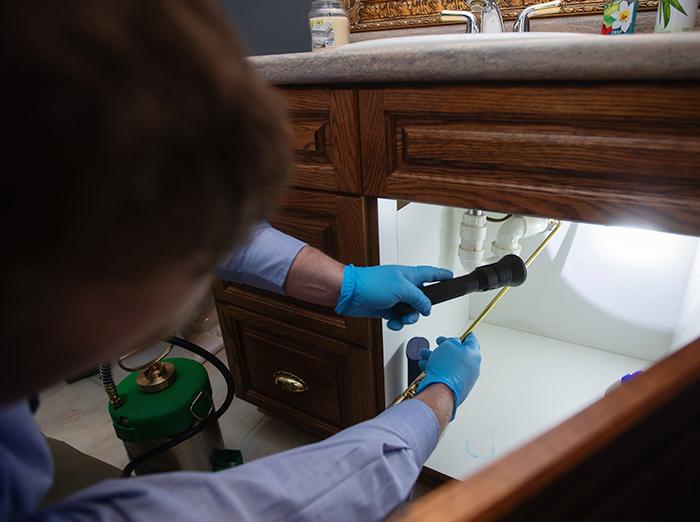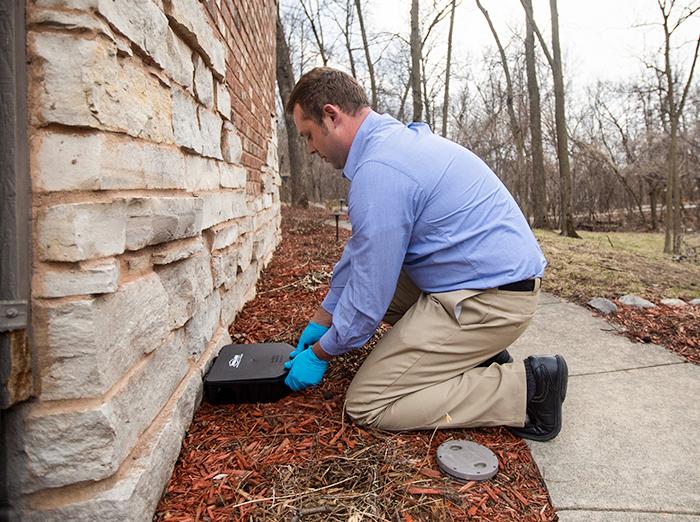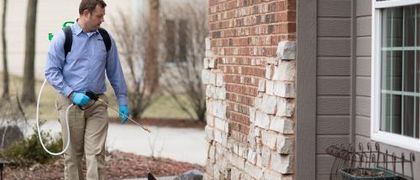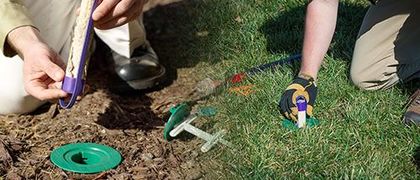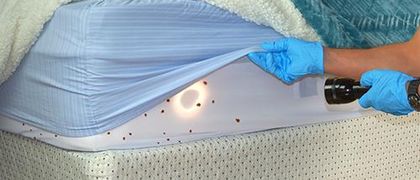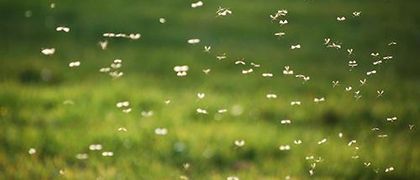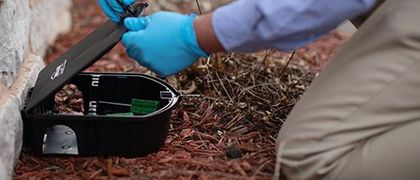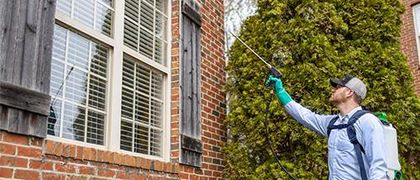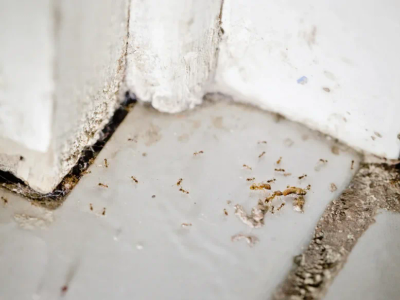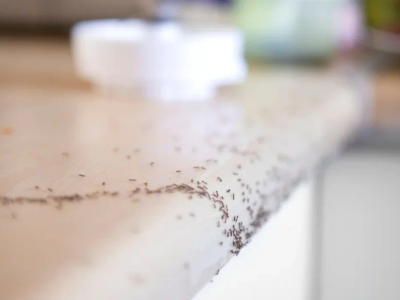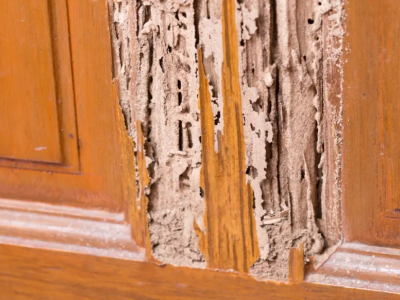Living in the Midwest means encountering a variety of wasps, each with their own habits and nesting preferences. Wasps have some positive qualities, but they can be a real headache for homeowners in Des Moines, Clive, Kansas City, and Omaha, as well as throughout the Midwest. For instance, you might stumble upon a wasp nest in the ground when mowing your lawn or notice the early stages of a nest when preparing to fire up your grill. In this article, we'll identify the common types of wasps in the Midwest, share nesting preferences, and provide other helpful information to help you effectively manage these unwelcome guests!
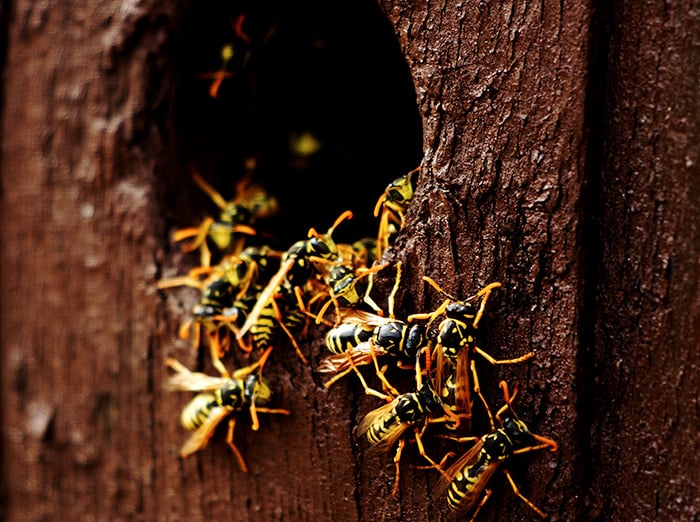
What types of wasps are common in the Midwest?
Before we discuss the topic, we want to clarify a point. As you’ll soon see, a hornet is listed as a common wasp in our region, and that’s not a mistake. Hornets are actually wasps and related to yellow jackets and other wasps. In fact, they’re sometimes called aerial yellow jackets. With that bit of housekeeping taken care of, let's move on and identify the common wasps in the Midwest.
Yellow jackets
Yellow jackets are easily identified by their small, stocky bodies and bright yellow and black markings. They have smooth bodies, defined waists, short legs, and transparent wings with a slightly yellowish tint.
Yellow jacket nests are made of a paper-like material created by mixing chewed wood fibers with saliva. They are typically enclosed and have a layered, comb-like structure and a papery outer shell. Yellow jacket nests vary in size, sometimes reaching the size of a basketball or larger.
These stinging insects build nests in old rodent burrows, hollow stumps or logs, and other cavities. Unfortunately, they also establish nests in wall voids, attics, under eaves, or other protected areas in and around homes and structures.
Paper wasps
Paper wasps have long, thin bodies with narrow waists. Their color varies by species, but the most common wasps in the Midwest region are brown with yellow or reddish markings. Some species have more pronounced black and yellow or orange coloring.
Paper wasps construct open, umbrella-shaped nests from paper-like material (also made with wood fibers and their saliva). Their open, comb-like nests contain a single layer of exposed cells where they raise their young.
Paper wasps typically establish nests under the eaves of houses, in attics, on porch ceilings and beams, under decks or balconies, and attached to tree branches and shrubs.
Bald-faced hornets
Bald-faced hornets have robust and somewhat elongated bodies with narrow waists. They are primarily black with white markings on their faces, abdomens, and the ends of their bodies.
Bald-faced hornet nests are large, enclosed, and constructed from paper-like material. These nests are often spherical or oval and can grow quite large, sometimes up to two feet long.
These stinging pests typically build their nests in elevated, sheltered areas, such as high up in trees, under the eaves of buildings, on utility poles, in large bushes or shrubs, and occasionally attached to structures. Paper wasps are also found in attics, wall voids, and other spaces inside homes and buildings.
Mud daubers
Mud daubers have long, slender bodies with thread-like waists and legs that hang down when they fly. They are usually black with pale markings or metallic luster, but some species have yellow or greenish markings.
As their name suggests, mud daubers build nests out of mud. Some species build nests that look like long tubes or pipes arranged in clusters, while others create more rounded, pot-shaped nests. Mud dauber nests are usually small and able to fit in the palm of a hand.
Mud daubers prefer sheltered spots for their nests, such as under eaves and porches, in garages, sheds, or other outbuildings, on walls, ceilings, or under windowsills, and in corners or crevices.
Not all wasps are aggressive, but some are highly aggressive
Whether you’re afraid of wasps or not, it’s important to recognize that not all are equally aggressive. Some species are relatively docile, while others can become quite defensive, especially if their nests are disturbed. Below, we’ve ordered the wasps we’ve been discussing from least to most aggressive:
- Mud daubers
These solitary wasps are the least aggressive and rarely sting. They are more interested in building the nests than fighting with property owners who come too close. - Paper wasps
Generally non-aggressive, paper wasps will only sting if there’s a direct threat to their nest. - Bald-faced hornets
These wasps are more defensive and will aggressively protect their nests from perceived threats. - Yellow jackets
By far the most aggressive wasp in the Midwest, yellow jackets are known for their aggressiveness and become particularly hostile when their nests are bothered. What’s more, they may give chase for several yards.
Common problems associated with wasps
Although there are plenty of natural food sources for wasps in the spring and summer, they are likely to steal from barbecues, picnics, and other outdoor events in late summer and early fall when their food supply becomes scarce and their dietary needs change.
For most of the warm weather months, adults feed on nectar and other natural sugar sources and feed their larvae a lot of protein. They swap protein for carbohydrates in late summer and early fall, easily gathered at human tables. This can result in more encounters of the stinging kind between people and pests.
When wasps nest indoors, their presence can lead to other concerns. Nests left unchecked can cause minor damage to wood, insulation, drywall, and other building materials. The moisture that leaks from nests can attract ants, roaches, and other pests.
But wasps are essential pollinators, right?
Not exactly. While it’s true wasps help with pollination, bees are much more effective at this beneficial task because their hairy bodies are better at capturing and transferring pollen from flowers to crops and plants.
Let’s talk about wasp stings
Wasp stings can be dangerous, especially for individuals who are allergic. Most people will feel an immediate sharp pain at the site, followed by mild pain, discomfort, and localized swelling. Symptoms should subside within hours and up to a few days.
Allergic reactions to wasp stings range from mild to severe. Mild allergic symptoms include extensive swelling beyond the sting site, mild nausea, or general discomfort.
Anaphylaxis, a severe allergic reaction, can be life-threatening. Symptoms include difficulty breathing or wheezing, swelling of the face, lips, or throat, rapid pulse, dizziness or fainting, hives or severe itching, nausea, vomiting, and diarrhea. This type of reaction requires immediate medical attention.
How to make your property less wasp-friendly
To discourage wasp activity in and around your home, the Miller Pest & Termite team recommends the following prevention tips:
- Eliminate food sources
Pick up fallen fruit from trees, cover compost piles, and keep the lawn and garden free of flowering weeds. - Cover food and drinks
Make sure to cover food and drinks when eating outdoors. - Wipe up spills, crumbs, and take care of trash
Promptly clean up spills and discard food and drink leftovers. Dispose of pop cans and dishes right after eating outdoors. - Keep trash cans covered
Wasps are scavengers who are not too proud to dive into your trash cans for a meal. To combat this activity, keep your outdoor trash cans tightly fitting lids. - Limit water sources
To discourage wasps, fix leaky faucets, dripping hoses, and other plumbing issues. You might also consider covering the pool and refreshing the water in bird baths regularly. - Seal entry points
Seal cracks, gaps, and openings on the house's exterior so wasps and other pests cannot sneak inside. Repair broken siding, replace missing shingles, and eliminate other potential entry points using screening and other exclusion materials. - Avoid bright colors and strong scents
Bright colors and strong scents from lotions, flowers, and other items can attract wasps to your outdoor living space; avoid them if possible. Consider buying neutral-colored patio furniture and refrain from wearing brightly colored clothing when spending time outside.
What to do if you find a wasp nest or wasps buzzing about
If you discover a wasp nest or notice wasps buzzing about just a little too close to areas where your family spends time outside, contact Miller Pest & Termite for assistance.
Our locally owned and family-operated pest control company provides home pest control services throughout Iowa, Kansas, Missouri, and Nebraska that include wasp nest removal. Even better, our plans also exterminate and prevent ants, spiders, fleas, and other insects, as well as rodents from infesting all year long!
Check out our Miller Guard plan below or contact Miller Pest & Termite to discuss your pest problem today.
Ongoing Home Pest Control Recommendation
Miller Guard
Our signature Miller Guard pest control plan stands out in the industry by giving you Full Pest Coverage and Zero hidden fees. It is designed to eliminate and prevent insect and rodent problems by targeting pest entry and exit points for maximum effectiveness. It includes an initial premium interior application, exterior applications, web removal, and wasp nest removal.
- Ongoing Preventive Services
- 29 Pests & Services Covered
- Initial Premium Interior Application
- Exterior Applications
- Rodent Control
- Wasp Nest Removal
- Cob-Web Removal
- 1-Year Service Agreement
Starting at:
$4999A Month
Free Quote Or Call (515) 518-8864

Additional Miller Guard Details
Pests Covered: Asian Beetles, Boxelder Bugs, Carpenter Ants, Carpet Beetles, Centipedes, Clothes Moths, Drain Flies, Earwigs, Fleas, Fruit Flies, Grain Beetles, Hornets, House Ants, Indian Meal Moths, Mice, Millipedes, Pill Bugs, Rats, Roaches**, Silverfish, Spiders***, Stink Bugs, Wasps, Weevils, Yellow Jackets
Service frequency will vary based on geography. The Miller Guard program does not include the following pests: honey bees, flies, lice, dust mites, mosquitoes, exterior ticks, ornamental/turf pests, slugs, snails, termites, wildlife, birds, and brown recluse spiders.
- Pricing does not include initial fee
- Must have credit card on file
**American, German & Oriental
*** Venomous & Non-venomous


Get Help Now!



